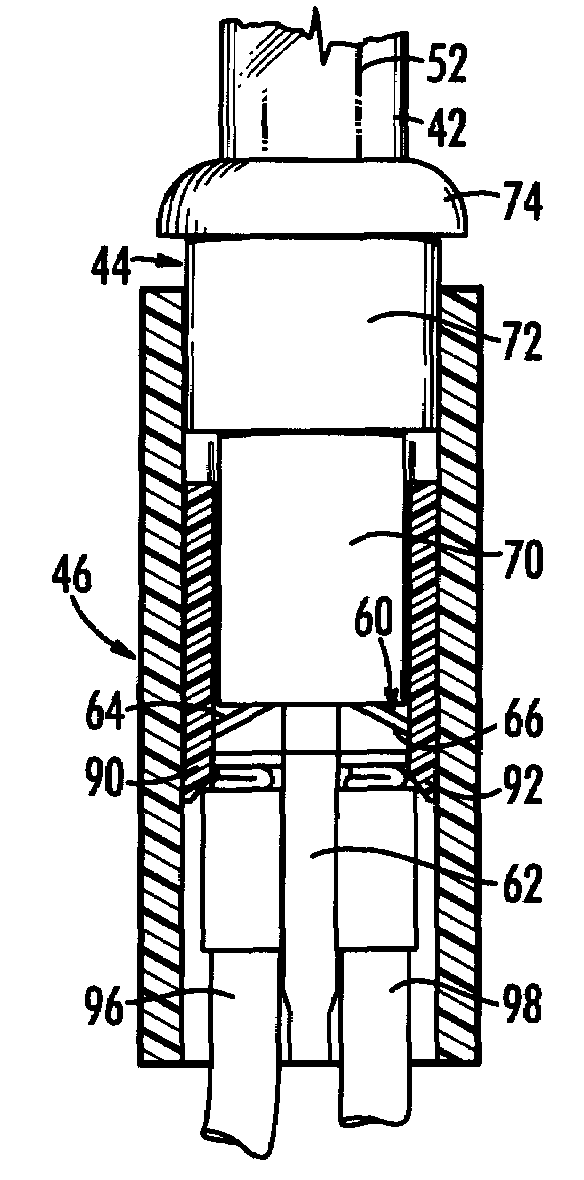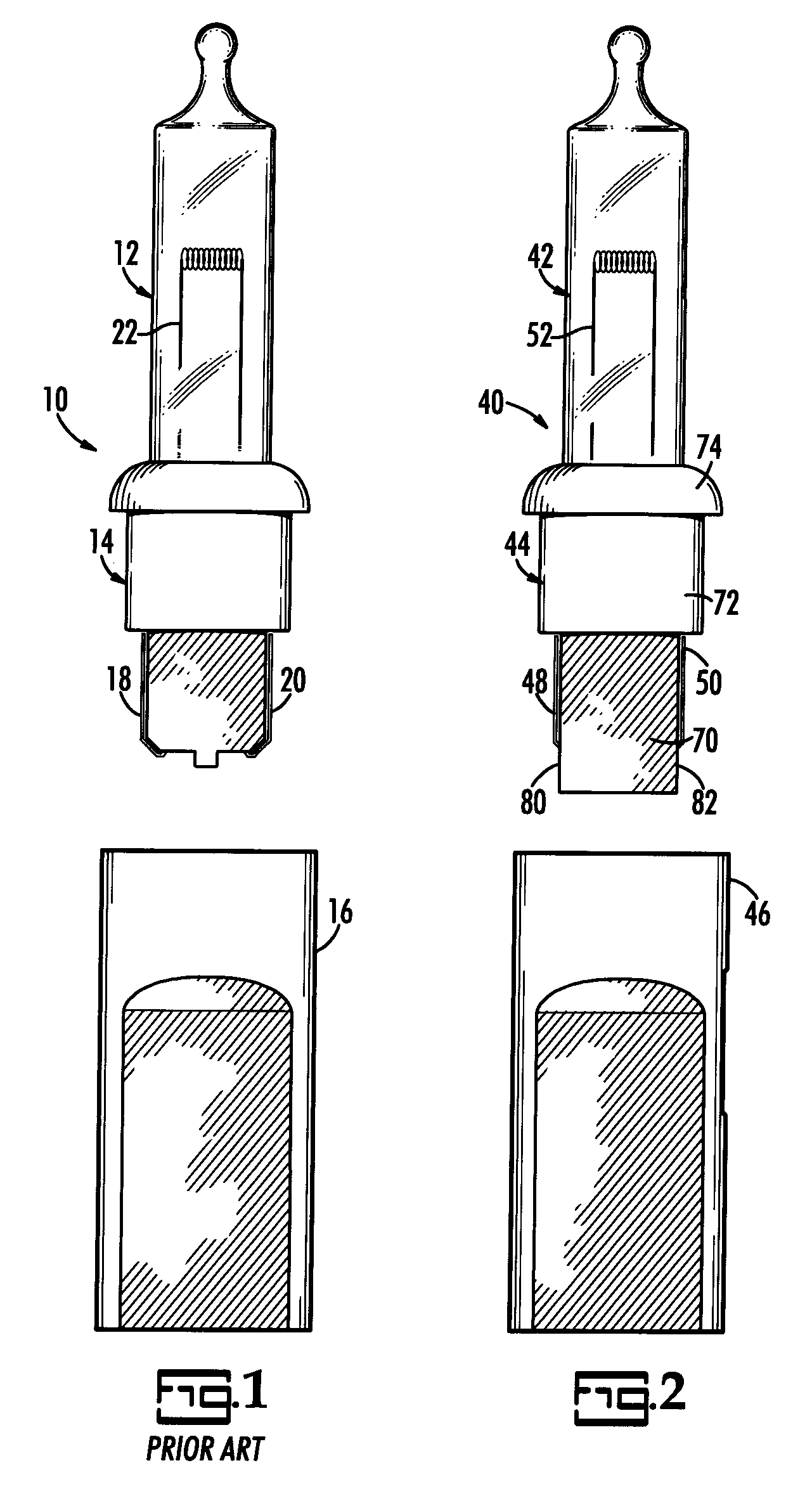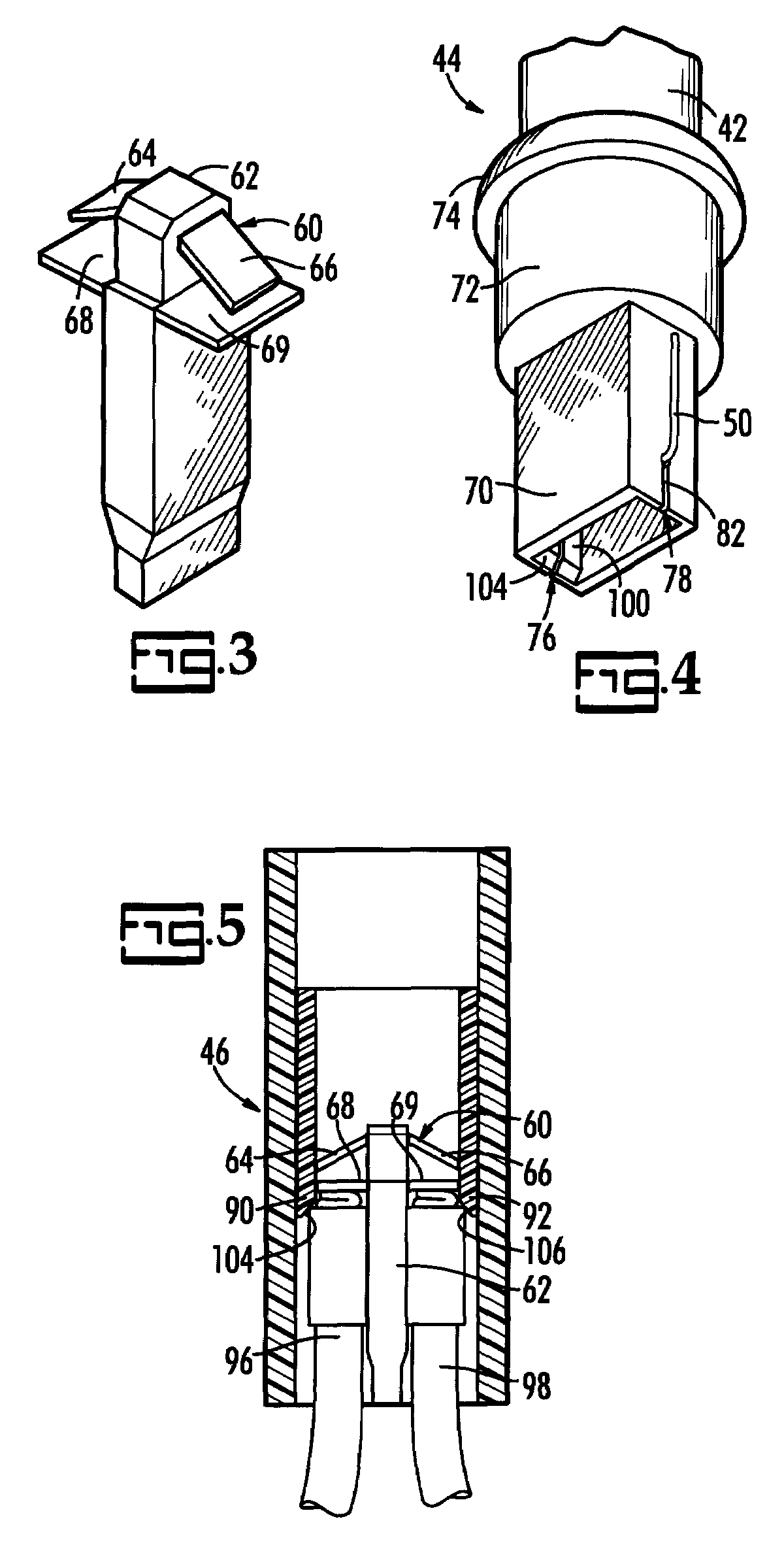Light string socket with mechanical shunt
a technology of mechanical shunt and socket, which is applied in the direction of lighting support devices, coupling device connections, lighting and heating apparatus, etc. it can solve the problems of tedious task of finding which socket is missing its bulb, and the entire series will lose electric power, and achieve the effect of convenient insertion of the shunt holder
- Summary
- Abstract
- Description
- Claims
- Application Information
AI Technical Summary
Benefits of technology
Problems solved by technology
Method used
Image
Examples
Embodiment Construction
[0024]FIG. 1 illustrates a prior art lamp, generally indicated by reference number 10, as viewed from the side, and with a globe 12 in its base 14 removed from its socket 16. Dumet wires 18, 20, extend from the bottom of base 14 and are bent laterally and upwardly along the sides of base 14. Dumet wires 18, 20, pass through base 14 into globe 12 and are in electrical connection with a filament 22 in globe 12 to form an electrical circuit when a voltage is applied across Dumet wires 18, 20.
[0025]FIG. 2 allows comparison of the present inventive lamp 40 to lamp 10 of prior art FIG. 1. Lamp 40 also has a globe 42, a base 44, and a socket 46. Dumet wires 48, 50, exit base 44 from the side rather than the bottom and extend upwardly from the exit point along the sides of base 42. Dumet wires 48, 50 pass through base 44 into globe 42 and are in electrical connection with filament 52 in order to form a circuit when Dumet wires 48, 50 are connected to a source of electricity. It will be appr...
PUM
 Login to View More
Login to View More Abstract
Description
Claims
Application Information
 Login to View More
Login to View More - R&D
- Intellectual Property
- Life Sciences
- Materials
- Tech Scout
- Unparalleled Data Quality
- Higher Quality Content
- 60% Fewer Hallucinations
Browse by: Latest US Patents, China's latest patents, Technical Efficacy Thesaurus, Application Domain, Technology Topic, Popular Technical Reports.
© 2025 PatSnap. All rights reserved.Legal|Privacy policy|Modern Slavery Act Transparency Statement|Sitemap|About US| Contact US: help@patsnap.com



